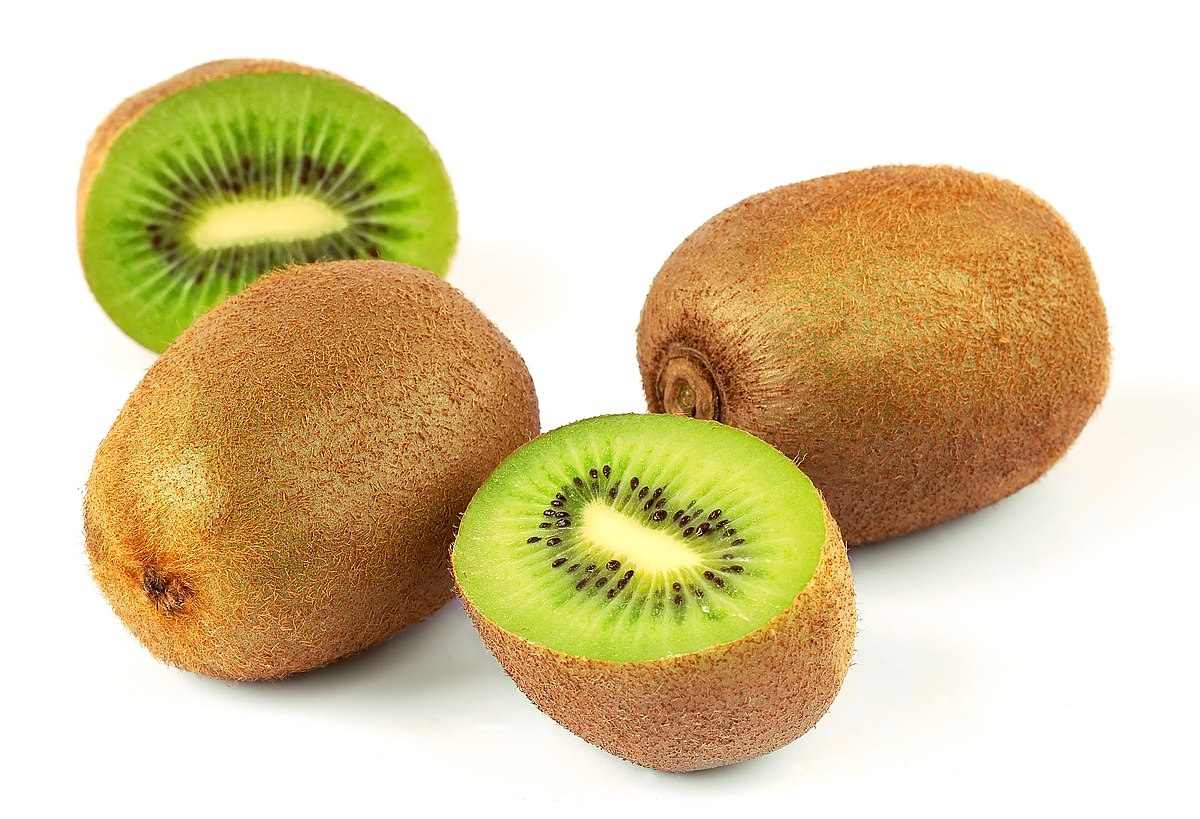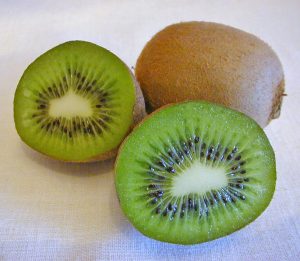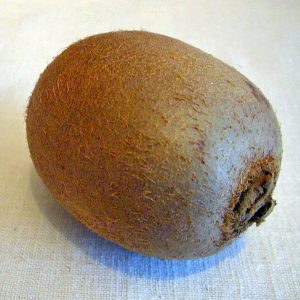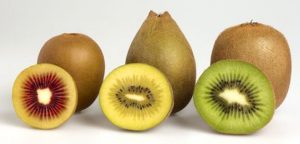As someone who loves gardening and photographing nature’s beauty, I find kiwi fruit trees particularly captivating subjects Their large, heart-shaped leaves, curly vines, and fuzzy brown fruits make them visually interesting plants to capture in images. In this article, I’ll share tips on photographing kiwi trees and showcase some of my favorite kiwi tree photos from talented photographers around the world.
A Bit About Kiwi Trees
Kiwi plants are vines that originated in China and require support structures to climb on as they grow. The most common edible kiwi variety is the fuzzy brown Actinidia deliciosa. Other popular kinds include the smaller, smooth-skinned A. chinensis and the hardy, cold-tolerant A. arguta It takes 3-5 years for kiwi vines to mature and bear fruit. Once established, they can produce for over 30 years
In addition to their unique fuzzy peel and bright green interior flecked with black seeds, kiwis provide lots of nutrition. These little powerhouse fruits contain antioxidants, vitamin C, vitamin K, potassium, and fiber. Their popularity has grown exponentially since commercial cultivation began in New Zealand in the early 1900s.
Tips for Photographing Kiwi Trees
Look for Good Lighting
One of the keys to capturing stunning kiwi tree images is great lighting. Early morning or late afternoon sun shining through kiwi leaves creates beautiful backlighting effects and illuminates the vines. On overcast days, you can still take nice photos, but the lighting likely won’t be as dramatic.
Get Up Close
Close-up shots of kiwi leaves, tendrils, flowers, and fruit make for interesting compositions. Fill the frame with kiwi plant parts to highlight colors, textures, and fine details. Using a macro lens or close-up filters helps you get really near and achieve super sharp focus.
Photograph the Entire Vine
By showing how long a kiwi vine is, you can help people understand how plants grow. Take pictures of vines that are wrapping around support structures and making frames for gates, arbors, and pergolas with their big leaves. This shows off kiwis’ natural trailing habit.
Focus on the Fuzz
The brown, fuzzy peel on ripened kiwi fruit is one of its most distinguishing characteristics. Get up close and zero in on the hairy texture and oval shape. Using selective focus will make the fruit really stand out against a blurred background.
Work with Negative Space
Using strategic negative space in kiwi photos creates visual interest. For instance, you could set up a picture so that there is a big area of green leaves at the top and a single kiwi fruit in the bottom third. The background is mostly green, which makes the fruit stand out.
Shoot in Different Seasons
Photographing kiwi vines throughout the year captures their evolving stages. Take pictures of new leaves growing and white kiwi blossoms blooming in the spring. Summer shows off lush foliage and growing fruits. And in the fall, ripe kiwis hanging from vines show off their beautiful colors.
Take Advantage of Morning Dew
Kiwi leaves, tendrils, and fruits look beautiful in pictures because of the morning dew that coats them. If you light the plants from the back or the side, the dewdrops will shine.
Eye-Catching Kiwi Tree Photos
Now let’s look at some stellar examples of kiwi tree images from top photographers. Analyzing these photos will help you recognize effective techniques to use when photographing kiwis yourself.
Backlit Kiwi Foliage
[Insert image 1 from pixabay.com]
The morning sunlight streaming through the kiwi vine’s large leaves in this photo creates a breathtaking backlit effect. The bright glow and softened leaves are beautifully captured. Shooting into the sun made the leaves translucent and defined their veiny texture.
Dew-Kissed Kiwi Fruit
[Insert image 2 from pixabay.com]
A close perspective and shallow depth of field make the single fuzzy kiwi the clear subject here. The dewdrops glimmer like tiny jewels in the early morning sunlight. Using a wide aperture for limited depth of field keeps the background soft and highlights the fruit.
Kiwi Leaf Portrait
[Insert image 3 from pixabay.com]
An extreme close-up showcases the color variance and veining in this young kiwi leaf. Getting really near the leaf with a macro lens or close-up filter allowed the photographer to fill the frame with the leaf for a graphic, abstract image.
Kiwi Vine Frame
[Insert image 4 from istockphoto.com]
Shooting through a gap in the kiwi vines framing this garden scene creates neat a perspective. The tunnel-like effect draws the eye towards the bright foliage and flowers straight ahead. The curved vines and leaves also add appealing leading lines to the composition.
Blossoming Kiwi Vine
[Insert image 5 from gettyimages.com]
The cascading vines and white flowers make this an ethereal spring kiwi scene. Shooting into the sunlight created rim lighting on the flowers and leaves. A shallow depth of field keeps the vine in focus while softening the background to really accentuate the blossoms.
Fruit-Laden Kiwi
[Insert image 6 from gettyimages.com]
Full with heavy clusters of fuzzy brown fruits, this vine makes a bountiful autumn subject. Photographing the entire length of the vine illustrates how loaded down it is. Sharp focus throughout provides detail on the fruits and leaves.
Kiwi Fruit Still Life
[Insert image 7 from istockphoto.com]
Arranging a group of ripe kiwis together in a basket allows close examination of their shape, texture, and color variations. Front lighting brightly illuminates the fuzzy fruits and creates catchlights to make them look extra fresh.
How to Include Kiwi Trees in Garden Photos
In addition to making great standalone subjects, incorporating kiwi vines into garden photographs can elevate the images. Here are tips for working kiwi trees into garden shots:
-
Use vines winding along fences, trellises, and arbors as living frames around focal points. The greenery and curves naturally lead the eye.
-
Allow vines to drape down stone walls or spill over from raised beds to add movement and natural beauty to landscape features.
-
Capture views through kiwi vine tunnels to create a sense of mystery and discovery in the scene.
-
Let vines trail around edges of paths and steps to showcase how kiwis spread.
-
Highlight kiwis flowering and fruiting to add seasonal interest to spring and fall garden images.
Ready to Photograph Kiwi Vines?

History & Overview of Kiwifruit

The kiwi is a flightless bird native to New Zealand, a name New Zealanders like to call themselves, and also a fruit – one of the very few temperate fruit crops to have been domesticated the twentieth century. Actinidia deliciosa is native to China and Russia’s high grasslands, low scrub, and forests. At the turn of the century, it was still just a wild plant in China, where it was eaten as a treat called Yang Tao. In 1904 seeds were imported into New Zealand (and about the same time into the U. S. and Europe). After some selection, the fuzzy brown fruits with green flesh were given the name kiwifruit, which comes from the Chinese word for gooseberry, and became a popular export crop. Today the kiwifruit is an important commercial crop in New Zealand, the United States, Italy, Japan, France, Greece, Spain, Australia, and Chile, with the more than a million tons of fruit per year distributed worldwide.

There is only one type of kiwifruit grown commercially outside of China, and that is called “Hayward.” It comes from two female plants and one male plant that were both introduced from the same seed. Grafted plants were first sold in the 1920’s, standardizing the type of fruit produced. ‘Hayward’ has large, oval fruits with bright green flesh that lack a hard or woody core.
But this is not the only type of kiwifruit. The genus Actinidia contains about 60 species. All are perennial, mostly deciduous, climbing woody vines native to Asia but their fruit is quite variable. Some produce fruits singly, others in bunches. The fruits vary in size, shape, hairiness, and color. The flesh can also vary in color, juiciness, texture, and taste, with some fruits being basically inedible while others are considered better than the standard kiwifruit.
Fruit diversity in Actinidia, with the commercial kiwifruit, A. deliciosa ‘Hayward’ for comparison.
- A. rufa
- A. melanandra (red kiwi)
- A. glaucophylla
- A. chinensis
- A. latifolia
- A. indochinensis
- A. chinensis ‘Hort16A’
- A. macrosperma
- A. arguta
- A. fulvicoma
- A. deliciosa ‘Hayward
- A. arguta var. purpurea (purple kiwi)
- A. guilinensis
- A. setosa
- A. chrysantha
- A. eriantha
In the 1980’s, a new commercial yellow-fleshed variety was created in New Zealand by crossing the conventional A. deliciosa with A. chinensis, which comes from warmer parts of China. This smooth-skinned ZESPRI™ GOLD™ cultivar — with a sweeter, more tropical taste and higher vitamin C content than the common ‘Hayward’ variety — was released in 2000. This variety was upgraded with improved disease resistance as ZESPRI™ SUNGOLD™. A. arguta has been introduced commercially in New Zealand and other cultivars may be developed.

Ask Your Gardening Question
If you’re unable to find the information you need, please submit your gardening question here:
Raintree Nursery’s Kiwi Growing Guide
FAQ
Can you grow kiwi in the United States?
You can grow kiwis in the United States, but it depends on the type you choose and the weather.
Why shouldn’t you eat the skin of a kiwi?
Although the skin is technically edible, some individuals dislike its fuzzy feel. According to several researchers, kiwi skin is safe to consume and contains loads of vitamins, nutrients, and antioxidants. The peel of kiwi is entirely edible and contains no toxic chemicals.
How long does it take a kiwi tree to bear fruit?
One male vine provides enough pollen for up to 6 female vines. Vines need to be pruned every winter and sheared during the growing season to keep them under control. Expect to get fruit 3 to 5 years after planting. The vines climb and should be planted near a sturdy support structure.
Where does a kiwi tree grow?
Origins: Kiwi fruit are native to China, where they can still be found growing in the wild. First cultivated: Rarely cultivated in its native China, commercial plantings of kiwi fruit didn’t occur until the 20th century in New Zealand.
How many kiwi tree stock photos are there?
Check out our collection of 1,297 real kiwi tree stock photos, high-resolution images, and pictures. You can also look through our collection of fig tree or New Zealand stock photos to find the perfect photo for your project. Browse Getty Images’ premium collection of high-quality, authentic Kiwi Tree stock photos, royalty-free images, and pictures.
How does a kiwi fruit grow?
A kiwi fruit grows on a tree (Actinidia chinensis). Here is a depiction of a kiwi tree plantation with branches bearing clusters of fruits. The image shows a healthy kiwi fruit growing on a tree in a garden, with solar light and leaf movement.
What does a Kiwi tree look like?
A Kiwi tree has healthy kiwi fruit growing on its branches and displays white flowers during blooming. The green new leaves on the tree are visible in the spring garden setting.
What is a kiwi fruit?
Based in South Australia, specialising in mainstream, rare and unusual perennial plants along with roses and ornamental trees. Actinidia deliciosa or the Kiwi Fruit is a deciduous vine that produces large plum shaped fruits that have furry green/brown skins and wonderfully refreshing green pulp inside.
Is Kiwi a tree?
Kiwi, Actinidia deliciosa, is a deciduous climbing vine or shrub in the the family Actinidiaceae grown for its edible fruits. The plant is vigorous and woody with nearly circular leaves which have long petioles and are alternately arranged on the stems.
What is the nature of a kiwifruit tree?
A kiwifruit tree is a vigorous, woody, twining vine or climbing shrub reaching 30 ft (9 m). Its leaves are alternate, long-petioled, deciduous, oval to nearly circular, cordate at the base, and 3 to 5 in (7. 5-12. 5 cm) long.
